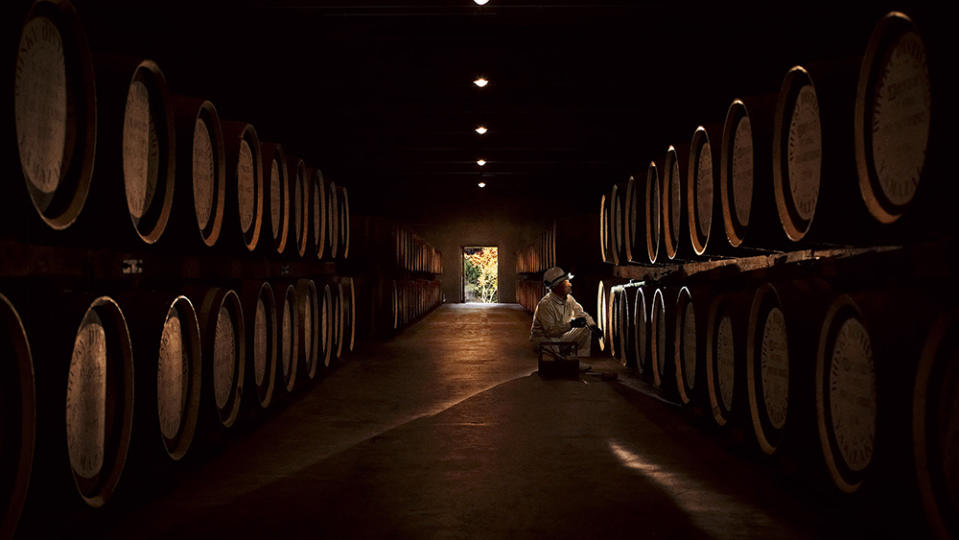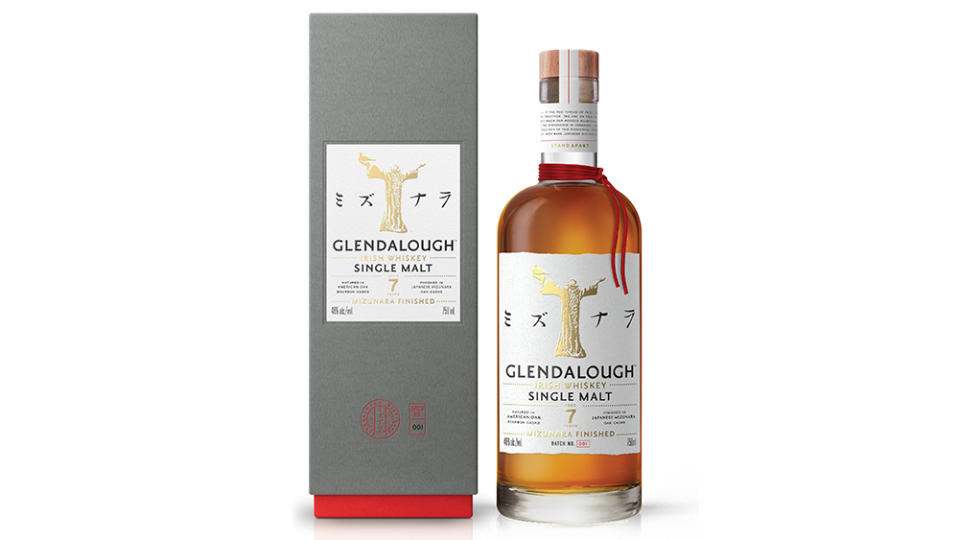How a Gnarly Japanese Tree Became a Whiskey-World Status Symbol

The whiskey world can be susceptible to fads and hype—indeed, a certain degree of gimmickry is to be expected in a market as crowded as this one. The current obsession, as you’ll no doubt be aware, is cask finishing, where the liquid is transferred to a different barrel after its initial aging—one that previously held a fortified wine such as sherry or a spirit such as rum—to impart another layer of flavor. But this is where things get interesting: Of late, a particular type of wood, the finicky Japanese oak tree known as mizunara, has become the flavor of the month, so to speak. And this time, it’s actually worth the hype.
Like cask finishing itself, which the Balvenie pioneered decades ago, mizunara oak isn’t exactly new to whiskey, at least in Japan. For instance, since its launch in 1984, one of the foundational components of Suntory’s the Yamazaki Single Malt has been whisky aged in mizunara casks. The tree’s use can be traced back to World War II, when bans on exports to Japan meant that the nation had to rely on its own trees despite the fact that mizunara oak can be frustratingly difficult to work with. The name translates to “water oak,” due to the high moisture content of the wood, so it needs extensive drying before being turned into barrels. The trees come from the Hokkaido region, where they’re a protected species, thus the Japanese government regulates how many can be logged. On top of all that, the price of mizunara barrels has skyrocketed in recent years.
More from Robb Report
5 Delicious Boozy Punches That Will Make Holiday Party One to Remember
Tokyo Drift? Japan's Wealthy Are Investing in Luxury Supercars Amid a Weakening Yen
But according to Glendalough Distillery co-founder Donal O’Gallachoir, these challenges are worth it. Glendalough has released several mizunara-finished whiskeys, the most recent of which is a 7-year-old single malt. “In all reality, no one should make a cask from mizunara, ever,” O’Gallachoir tells Robb Report. “The trees take so long to grow, they don’t grow straight; the staves are prone to cracking and leaking; it takes three years to dry them out before we can make a barrel.”

When Glendalough finished a 13-year-old whiskey in mizunara oak a few years ago, it leaked so badly that the Japanese supplier sent over fermented persimmon juice to coat the outside of the barrels to organically seal them. According to O’Gallachoir, the wood was so dry when the barrels were filled that instead of angel’s share there was actually “devil’s share”; 8 to 10 percent of the liquid soaked into the wood in the first week.
Despite all this, producers and distilleries continue to use the oak because of the intense and wonderful flavor it can impart. Typical notes are often described as incense, sandalwood, cedar, tropical fruit and coconut. (O’Gallachoir says mizunara is sometimes called “temple whiskey” in Japan.) It’s not just whiskey anymore either, as other spirits are getting the mizunara-finish treatment: Recent examples include Courvoisier Cognac, Monkey 47 gin and Sake Hundred.
While there’s certainly a bit of cachet that comes with being able to say your spirit spent time in mizunara as evidenced by its high cost and limited availability, it’s really all about intent and purpose. Finish a whiskey for too long and the wood might overpower it, too short and the meaning is lost. The good news is that there are some excellent mizunara-finished bottles available now that really highlight how this rare and delicate wood can transform a whiskey.
1. The Yamazaki Mizunara Japanese Oak Cask 2022 Edition

This new release is part of the 2022 Yamazaki Limited Edition Tsukuriwake Selection, a quartet of whiskies that deconstruct the individual components that go into the Yamazaki Single Malt. The mizunara expression is fantastic, with elegant notes of caramel, tropical fruit, vanilla and some sandalwood on the palate.
2. Rabbit Hole Founder’s Collection 15-Year-Old Cask Strength Kentucky Straight Bourbon Finished In Japanese Oak

This whiskey was released as the second entry in this Louisville distillery’s Founder’s Collection. It’s a blend of 10 barrels of 15-year-old bourbons that was then aged in mizunara oak for an additional year and bottled at cask strength of 114.2 proof. This bottle is very hard to find but worth seeking out for its unique palate of tobacco, nutmeg, pepper, cinnamon and a whiff of fading smoke.
3. Glendalough 7 Year Old Mizunara Cask

Glendalough claims to be the first Irish whiskey brand to use mizunara oak and specifically wants to highlight how it affects the Irish single-malt category. This whiskey comes after 13- and 17-year-old mizunara-finished releases and stands tall with these prior bottles. After seven years in bourbon barrels and just a few months in mizunara oak, the liquid is transformed with notes of chocolate, cedar, incense and fruit on the palate.
4. Writers’ Tears Japanese Cask Finish Irish Whiskey

This is another Irish whiskey finished in mizunara but one that offers something very different. The liquid is a blend of Irish single-malt and single-pot-still whiskey, a single-cask release bottled at cask strength with no chill filtration. The fruity notes are amplified here with a bit of sandalwood, pear and vanilla on the palate. And at 55 percent ABV, this packs a bit of a punch.
5. Angel’s Envy Straight Bourbon Whiskey Finished in Mizunara Casks

This bourbon is a blend of liquids aged for four and nine years, respectively, that was then put into new charred mizunara oak barrels for a full two years—a long time by any standard. Angel’s Envy is a brand known for cask finishing, but this was a first. The bourbon is rich and complex, with notes of black pepper, banana, cherry, chocolate and a bit of smoke on the palate.
Best of Robb Report
Why a Heritage Turkey Is the Best Thanksgiving Bird—and How to Get One
The Ultimate Guide to Wagyu Beef, the World's Most Luxurious Steak
Sign up for Robb Report's Newsletter. For the latest news, follow us on Facebook, Twitter, and Instagram.

